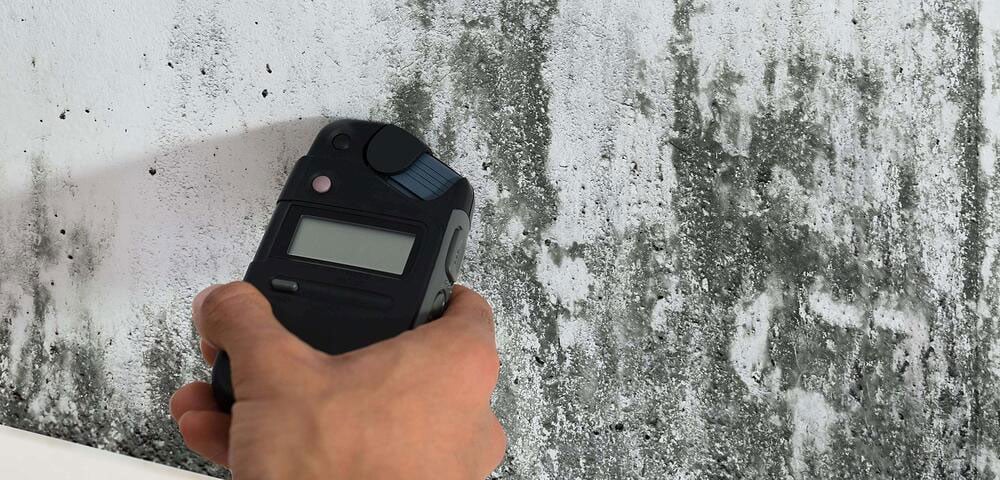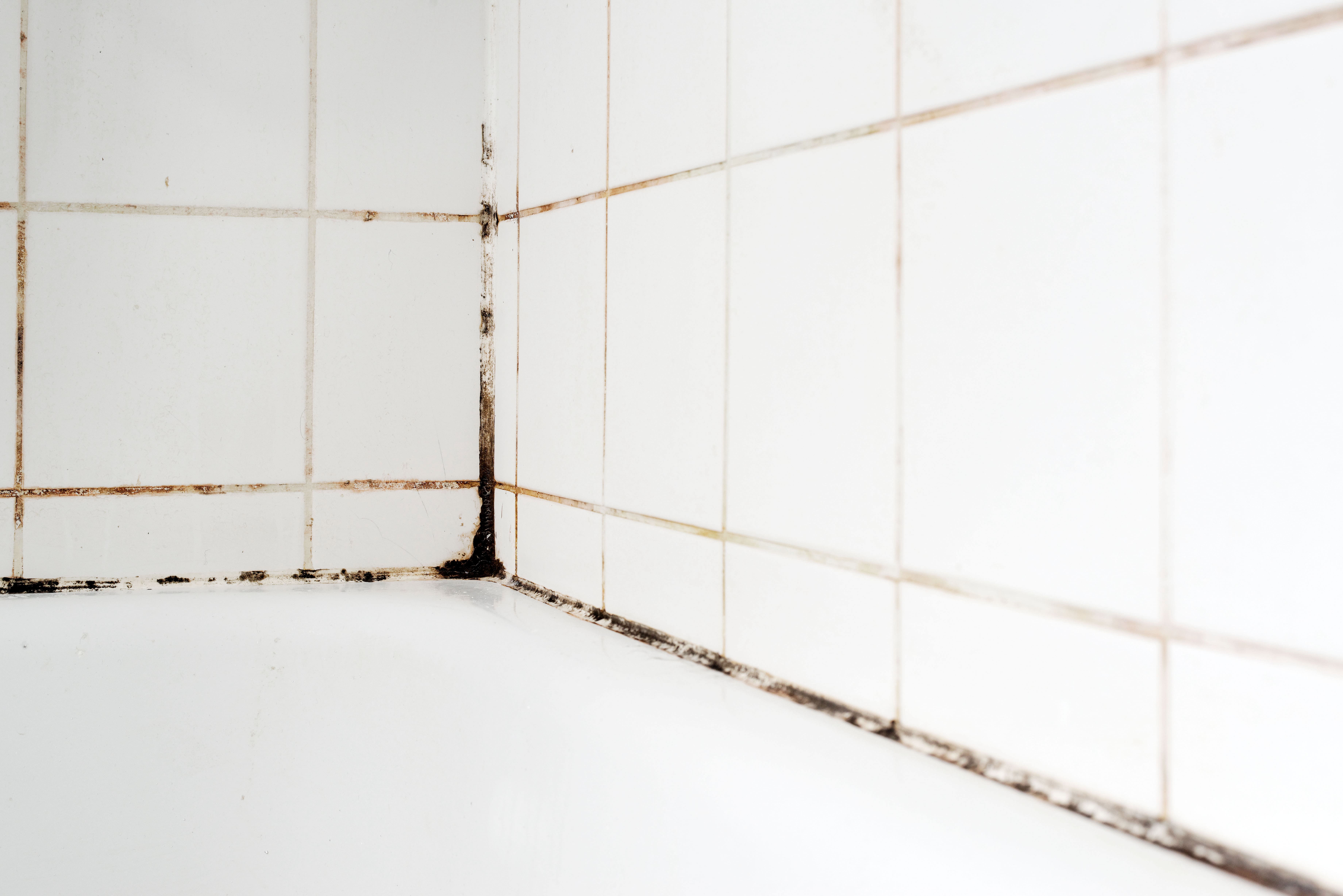How to test for mold in your house

Mold is a known health hazard. Sadly, not all mold is visible to your eye, meaning it could be all over your home without you realizing it. This type of fungus grows and spreads through tiny spores that fly around your indoor space, agitating your allergies.
When these spores land on strategic locations with the right conditions, they multiply quickly, forming a colony in just 24 hours. Typically, mold thrives in damp and warm areas with temperatures between 40 and 100 degrees F. This makes your bathroom and basement conducive for mold growth.
Do you suspect there's mold in your home? If so, you're in the right place.
This article discusses everything mold related, including what mold is, signs you have mold, the best ways on how to test for mold in your house, as well as how to prevent and remove mold.
What is mold, and what does it look like?
Mold is a kind of fungus made of tiny organisms, present almost everywhere. They grow from spores that float in the air before landing in areas with moisture and the right temperature.
Some species of mold are not visible. However, other species, particularly mildew, are easy to spot. They usually start as small black spots that you can see in grout lines in damp and shady places.
While mold is easy to distinguish, some people can confuse it with dirt, especially if it grows in small hidden colonies. A quick test for this is to dab drops of diluted bleach on the area. If the area lightens after a few minutes, it's a positive result for mildew. If it stays dark, then there's probably no mold.
Signs you have mold in your house
Determining whether you have mold in your house can be challenging. However, knowing the signs to look out for should simplify your task. Below are indicators you might have a mold problem in your indoor space;
· Allergic symptoms
Mold aggravates allergic symptoms. If you feel sick, experiencing symptoms like a runny nose, sneezing, headache, coughing, or asthma attacks for people with asthma, it could be due to mold growing in your home.
· Smell
Mold produces a unique pungent smell. The odor is often described as musty, earthy, or resembling rotten wood.
· Visible mold
Sometimes, you can see mold growing in shady and wet areas in your home. If you spot mold growing, ensure you seek immediate help. Professional mold remediation services can help you deal with the mold and prevent it from spreading.
What if you have experienced some allergic reactions and a musty smell, but you're not sure if it really is mold? Why not carry out a test for mold in your house to be sure? Here's what you need to do.
How to test for mold
Testing for mold in your house is the surefire way to tell if you have mold. Here are the steps to test for mold in your home;
1. Close windows and doors
As mentioned earlier, spores travel freely in the air. So close all windows and doors before carrying out the test to allow the spores to collect in the room without being moved around by drafts. Closing the room for 24 hours before performing the test should give you the best results.
2. Get the Test Kit ready
Take out the kit from the packaging. Usually, it contains a petri dish or shallow plastic treated with a 'microbial culture' that supports the growth of mold spores.
Leave the kit open for the amount of time indicated on the packaging to collect enough mold, if present in the room. For best results, always place the kit on a raised flat surface, the height of a table.
3. Leave the Petri dish uncovered
Let the dish stay uncovered and untouched for 48 hours (the time may vary from one manufacturer to another) to allow it to collect as many samples as possible. Meanwhile, keep the room closed with no traffic in and out. You can mark the door with colored tape to indicate that the place is off-limits.
4. Cover the disk
After the 48 hours, put the lid back and cover the petri dish. Using a layer of tape, seal the lid to the dish to stop the spores from escaping. Scotch and electric tapes are preferred to duct tape because they are easy to remove. Leave the dish in a dark place.
5. Place the disk in a dark spot
Keep the taped petri dish hidden in a dark place such as a closet shelf for up to 2 days. After that, check out for signs of mold growth. Typically, the spores start germinating and growing after 24 hours, and it should be easy to spot mold in 2 days; it looks like the mold you see growing in old food.
If there's no sign of mold, return the petri dish to the dark spot. Keep checking for signs of mold daily. If there's no sign of mold after five consecutive days of checking, the results indicate the kit found no mold in the room.
NOTE: You may still notice a musty odor even after the kit has returned a negative result for mold. In such instances, you may want to call a professional to run another test, as that could mean there's hidden mold inside the house that your test could not pick up.
6. If the result is positive, send it for lab tests
If the test returns a positive outcome, consider sending the dish to a lab for further tests. The lab recommended by the manufacturer is the most preferred to carry tests that will determine the type of mold in your house and the perfect way to treat it.
7. Wait for results
It takes nearly eight weeks to get your results back from the lab. During this period, continue testing different areas of your house for molds. Use new kits for separate rooms for best results.
How mold affects your health
If you find out there's mold in your house, you need to know its implication on your health. Well, there are many mold species, but the most dangerous is Stachybotrys chartarum, also referred to as "black mold" or "toxic mold."
While black mold is among the most commonly known mold, it is actually quite rare. This species is known for its high levels of mycotoxins that are dangerous to your loved ones. Also, note that although the other species are not as poisonous as black mold, they can be a health risk if left to grow out of hand.
Some of the health effects of mold include;
- Running nose
- Coughing
- Chronic headaches
- Shortness of breath
- Watery eyes
- Skin rashes
- Memory loss and reduced concentration levels
These symptoms become more severe in people with allergies, weak immune systems, and respiratory problems like asthma.
Common places where mold can grow
Mold can be found almost anywhere, but it grows best in damp, dark places. That said, mold can be found in certain strategic locations in your home, such as;
- Beneath sinks
- Ceiling tiles and underneath wood and paper products
- Around leaks in pipes or roofs
- Behind appliances like dishwasher
- Bathroom
- Attics and Basement
How To Prevent Mold
As mentioned above, household molds trigger allergy symptoms, including eye irritation, coughing, and other allergy-related symptoms. So, preventing mold in the home should be a no-brainer to make it habitable.
Here are a few ways to prevent mold in your home:
1. Dry wet areas
Mold requires moisture to grow, so drying the wet areas is key to preventing it. A spill on the carpet, accumulation from a leaky pipe, or any other problem causing moisture in your house should be fixed as soon as possible.
Do not leave wet items lying in your home and dry your bathroom's walls and floor after a shower. Also, don't leave wet clothes in the house. Instead, hang them outside to dry.
2. Prevent moisture with proper ventilation
Your daily domestic activities may be the reason why mold grows in your home. Ensure that activities like taking a shower, doing laundry, or cooking meals doesn't invite mold in your home. You can do this by providing proper ventilation in your laundry room, kitchen, bathroom, or other high-moisture areas.
Open your windows when you're cooking, doing laundry, or washing dishes to keep the house mold-free. Also, use dehumidifiers and AC units to keep your home dry.
3. Improve the airflow in the home
Moisture may appear in your home's walls, floors, and windows when the airflow in your home is poor. Open windows and doors, leave closet doors open, and move furniture away from walls to allow air circulation.
4. Direct water away from your home
If the area around your house is not well sloped, water may collect and find its way into the basement or crawlspace. If that's the case, direct the water away from your home to avoid moisture and mold.
4. Avoid plants that encourage mold in your home
Plants are beautiful and improve your indoor air – but some can encourage mold in the house. Plants that like moist soil will encourage mold around the house, so avoiding them can be key to reducing mold in the home.
How To Remove Mold
Mold infestation can destroy your home's appearance – and your health! So, what do you do when it forms in your home? First, you'll need a few equipment and tools to get started, including:
- Rubber gloves
- Drywall saw
- Safety glasses
- N-95 respirator
- Paintbrush
- Shop vacuum
- Heavy-duty cleaner
- Bleach
- Garbage bags and more
Then, using bleach and water solution, wet the moldy area, scrub it, and leave it to dry for several minutes. Move to another area when the mold lightens. If the stains remain, reapply the bleach and water solution and scrub it. You may use a soap solution in the place of bleach. Once the moisture dries up, clean and spray the area with antimicrobial treatment to prevent the mold from growing again.
In most circumstances, it’s really recommended that you hire a professional mold removal firm to avoid health problems, prevent spreading mold unknowingly and getting that that’s no mold remaining.
Note: Failure to follow the right mold removal precautions can contaminate the rest of the house and leave you with breathing problems.
The Bottom Line
Mold can be a nuisance in the home. It can destroy its appearance and lead to health problems for the inhabitants. And even though you can prevent and remove mold in the house, that doesn't mean you should. Some parts are out of your reach and sight and without mold removal training and certification, it’s not worth the risk of not having a professional.
Thankfully, you have options. With the right mold removal firm, it becomes possible to remove mold from your home forever. WeDry USA is here to help you with all your home mold testing and mold remediation services. Contact us today for more information.

